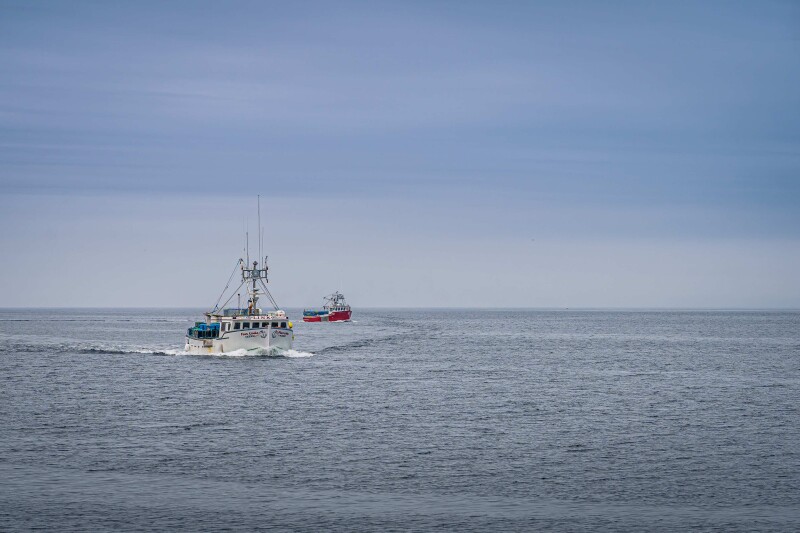The Canadian shellfish industry is navigating a winter season filled with significant hurdles. From Nova Scotia's struggling lobster fishery to disputes in Newfoundland over snow crab payments and prices, challenges are mounting for harvesters and processors alike.
Lobster Season in Nova Scotia
In Nova Scotia, the winter lobster season is off to a rough start. Lobster harvesters in the province’s largest fisheries, Lobster Fishing Areas (LFAs) 33 and 34, are grappling with a combination of weather disruptions, weak landings, and lower-quality catches, which have significantly impacted both prices and operations. Recent articles have shown that these areas are critical to the Canadian lobster industry, as they contributed to 22 percent of the country's total lobster landings in 2023, amounting to 21,405 metric tons of lobster.
Harvesters have been faced with challenges since the season kicked off in late November. Heather Mulock, executive director of the Coldwater Lobster Association (CLA), told Undercurrent News that the weather has severely impacted the lobster fleet, and reports indicate that catches are down by as much as 20 percent in LFA 34 compared to last year. The situation is especially dire in St. Mary’s Bay, where many harvesters have been struggling to meet expectations. “It’s been a horrible season overall,” Mulock, highlighting that the weather isn’t the sole issue; illegal fishing practices are also contributing to the downturn in catches.
St. Mary's Bay has been flagged as a hotspot for illegal fishing, with the Unified Fisheries Conservation Alliance (UFCA) alleging that commercial-sized boats have been actively fishing during the off-season, undermining the efforts of licensed harvesters. This ongoing problem is pushing many legitimate fishermen further out to sea, leading to operational inefficiencies and added costs. Mulock forecasts that some licenses may soon be put up for sale due to the unsustainable conditions.
With these challenges, the price at the docks has held steady at around $8.34 per pound (converted to U.S. dollars), a slight increase over last season’s opening price of $7.31 per pound but still not enough to make up for the loss in volume and quality. “It’s not horrible, but it’s not great either,” Mulock told Undercurrent, reflecting the tenuous position many harvesters are in. Some dealers are paying slightly higher prices at $8.70 per pound, but the low quality of the lobster being caught this season, which includes a high proportion of soft-shelled, medium-shelled, and single-claw lobsters, is complicating matters.
Stewart Lamont, president of Tangier Lobster, a Nova Scotia-based lobster exporter, told Undercurrent News that around 20-30 percent of the catch this season has been considered undesirable for the live market. This poor quality is translating into financial losses for shore dealers who are forced to absorb the cost of these subpar lobsters. “It’s a massive challenge,” Lamont said, adding that the market has been sluggish internationally, further dampening prospects for recovery.
While there have been slight increases in wholesale prices, especially for hard-shell lobsters, export prices have begun to dip. According to Undercurrent, lobster export prices to key markets like Shanghai and Paris dropped by about 2-4 percent in early January compared to December. Despite the weather-induced slowdowns, some hope remains that the situation could improve in the coming weeks, especially with holidays like Valentine’s Day and Mother’s Day on the horizon.
Snow Crab Disputes in Newfoundland
Meanwhile, the snow crab industry in Newfoundland and Labrador is also in the spotlight, but for a different set of reasons. While many harvesters celebrated a bump in dock prices in December, which were raised to $2.61 per pound (converted to U.S. dollars) from the initial $2.09, not all of them are reaping the benefits. According to another article by Undercurrent News, some snow crab captains have chosen not to share the extra payments with their crew members, leading to complaints on social media.
The bonus payments came after an agreement between the Association of Seafood Producers (ASP) and the Fish Food and Allied Workers (FFAW), Newfoundland’s harvester union. As per the agreement, harvesters were promised a retroactive pay increase if the final dock price for 2024 was higher than anticipated. However, some crew members feel left out as captains have withheld these additional earnings. Dwan Street, president of the FFAW, acknowledged the issue, confirming that although captains are not legally required to share the bonus payments, they are encouraged to do so. "Unfortunately, we do seem to have a number of enterprise owners who have simply refused to include their crew members in that payment."
This dispute highlights the ongoing tension between captains and crew members, with many workers expressing frustration over what they see as unfair treatment. While it is not uncommon for captains to retain a portion of earnings, these situations are particularly contentious when crew members feel they are being excluded from an agreed-upon bonus.
The snow crab industry in Newfoundland is just as sensitive to global market fluctuations as the lobster industry. As Undercurrent News noted, the 2024 season started with a dock price of $2.09 per pound, but the market situation is constantly shifting. Disagreements over payment distribution are just one of the many challenges faced by harvesters in the region, and they could have long-term consequences for workforce morale.
Steaming Ahead
Both the lobster and snow crab fisheries are encountering challenges that stem from a combination of environmental factors, illegal practices, and market fluctuations. As the season progresses, harvesters in both regions remain resilient, but their ability to withstand these difficulties will be tested.
In Nova Scotia, the weather is expected to remain unpredictable, with high winds and rough seas continuing to affect the lobster fleets. While prices are holding steady, dealers and processors are struggling with lower-grade lobsters, making it difficult to maintain profitability. The snow crab industry in Newfoundland, meanwhile, faces internal disputes that threaten to affect the trust between captains and crews, while still dealing with the uncertainties of a fluctuating global market.
The Canadian shellfish industry is clearly under pressure, but like other fisheries, will remain resilient. Fishermen will be hopeful that the challenges of 2024 will be met with a shift heading into the new year.







